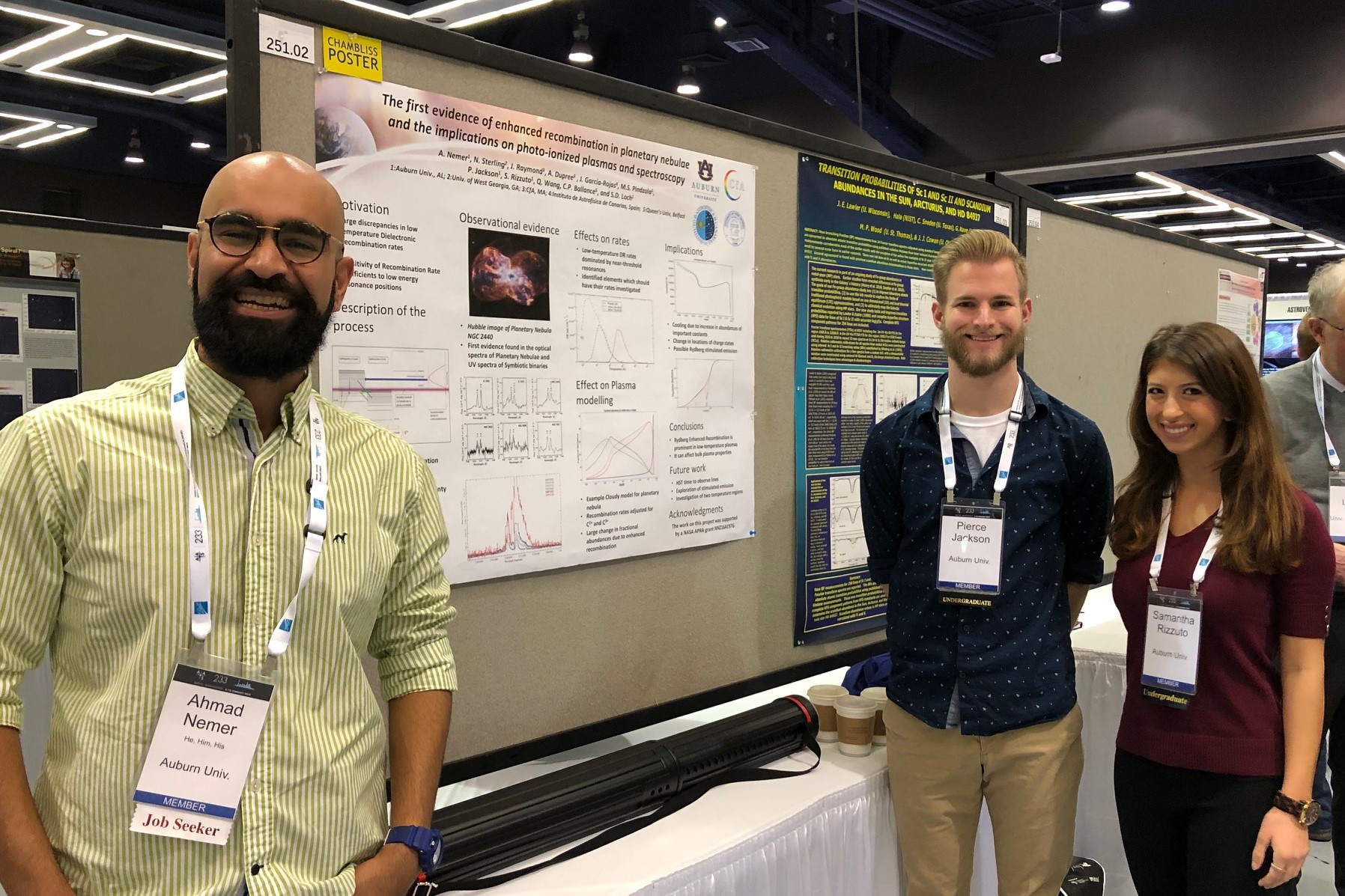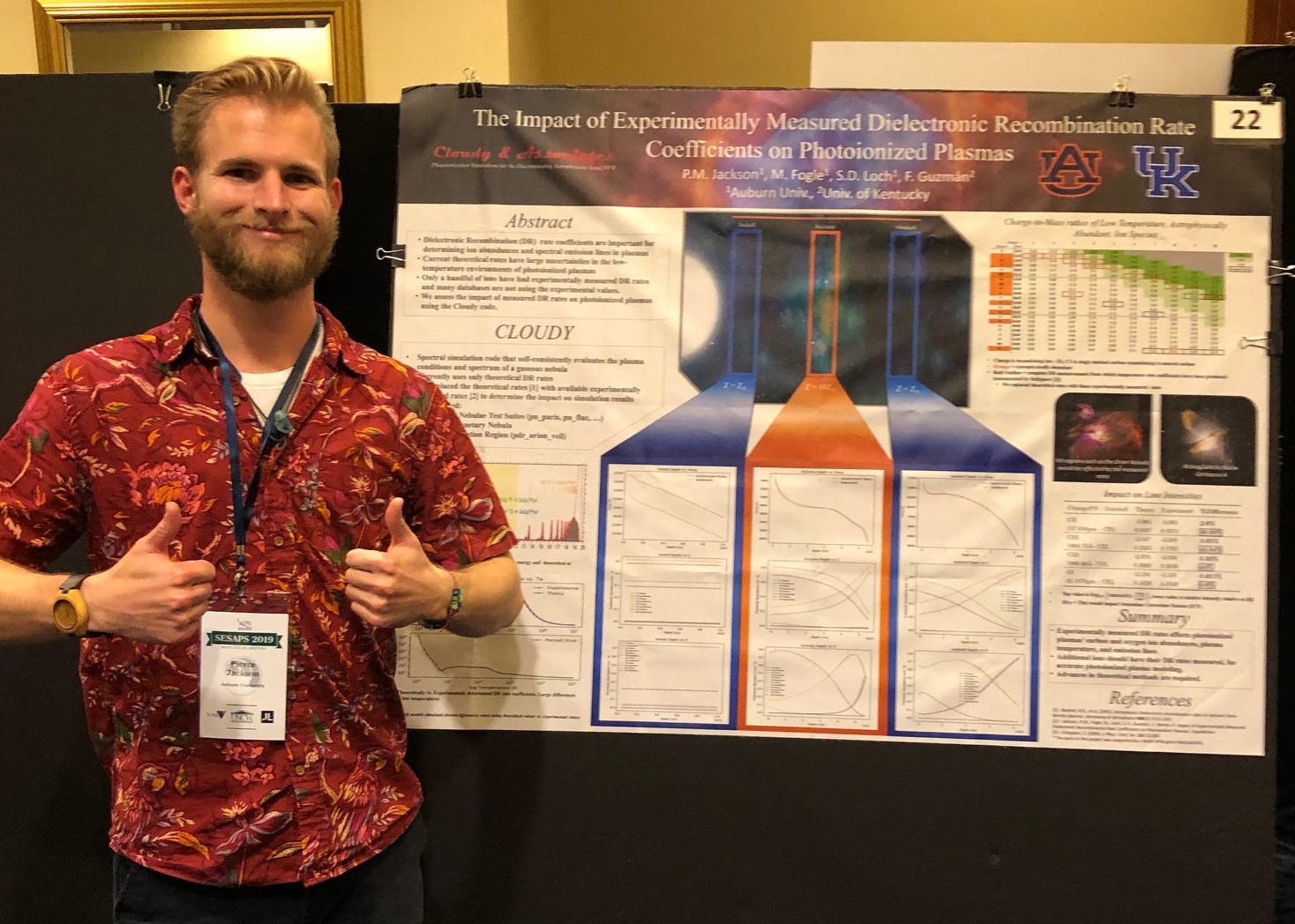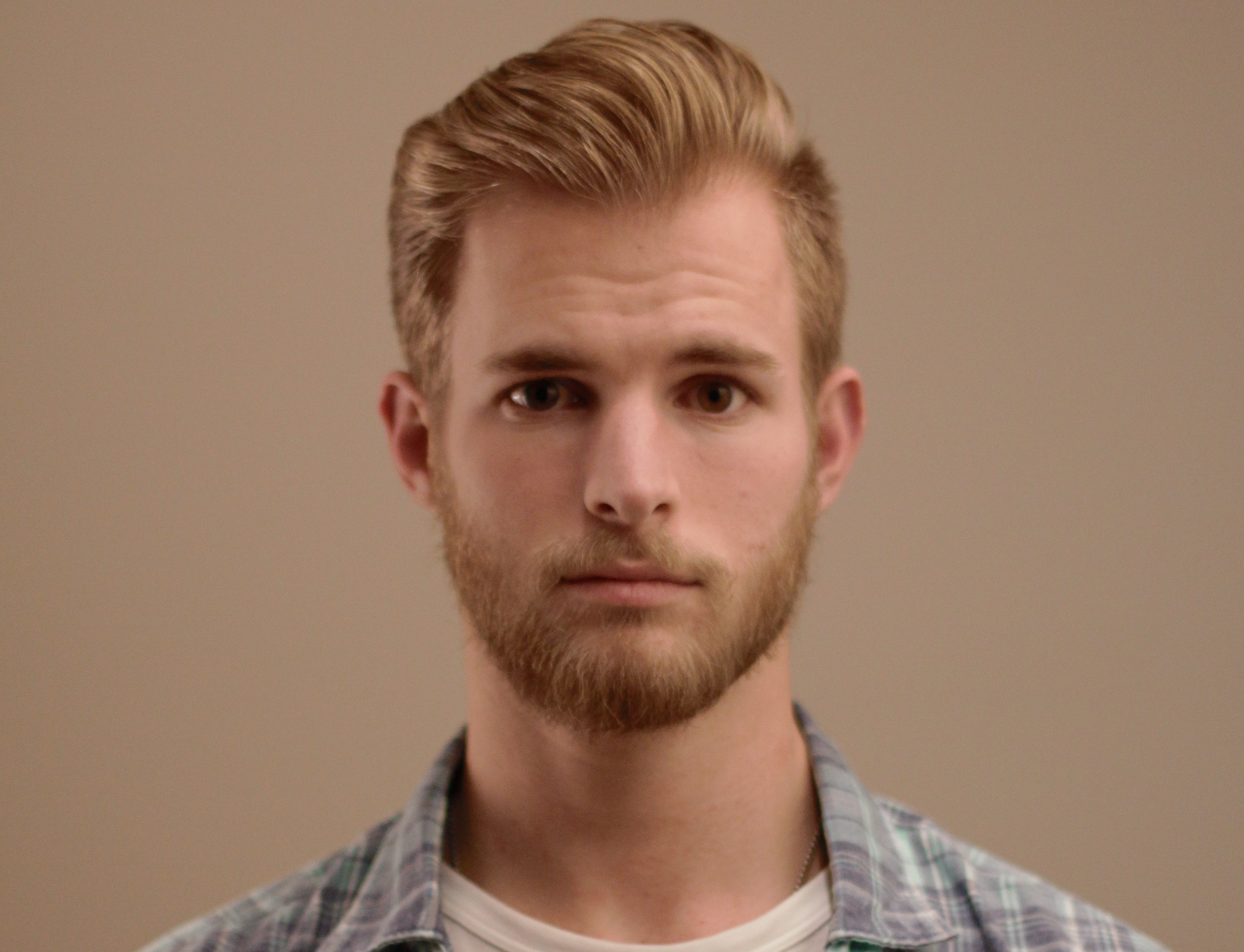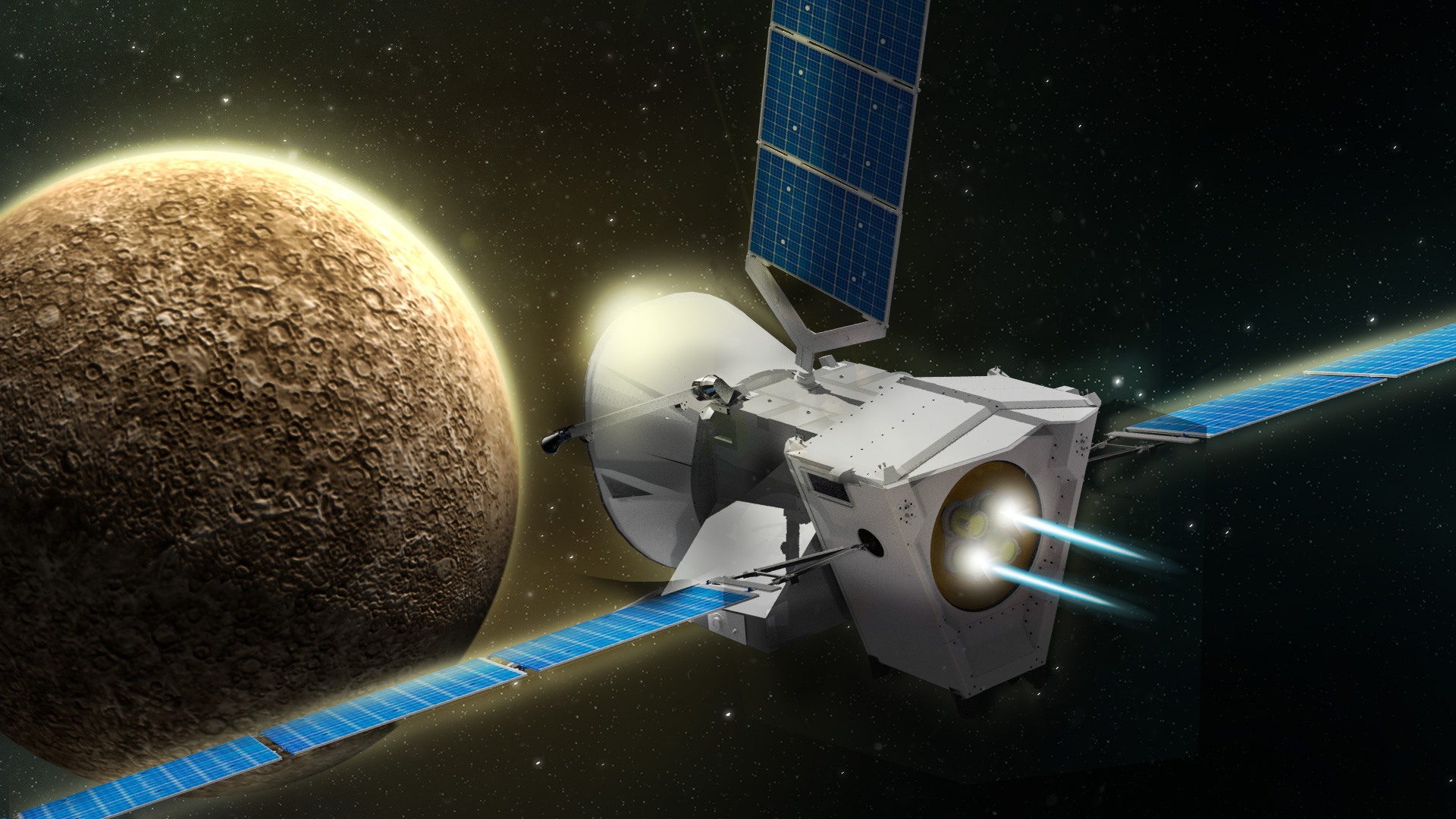Atomic Physics Research at AU
As a Physics undergraduate student at Auburn, I conducted theoretical research to understand how hybrid dielectronic recombination rate coefficients affect simulation results of astrophysical plasmas. I worked primarily under Dr. Stuart Loch's direction within the Physics department's Atomic, Molecular, & Optical Sciences group.



Rydberg Enhanced Recombination
The first project began during the spring of my sophomore year. I worked under the direction of Dr. Stuart Loch and graduate student Ahmad Nemer to prove the existence of a new atomic process referred to as ‘Rydberg Enhanced Recombination’ (RER). I played a minor role by modelling how RER might impact radio-recombination lines in astrophysical plasmas. On December 5, 2019 the results of Ahmad’s research was published in The Astrophysical Journal Letters: Nemer et al. 2019 ApJL 887 L9.
Dielectronic Recombination
The following spring, I undertook my own research project (advised Dr. Loch, of course), also relating to light-matter interactions. I investigated how hybrid dielectronic recombination (DR) rate coefficients (as compared to theoretically calculated rates) affect ion fractional abundances and line emissions of astrophysical plasmas, such as planetary nebulae. In addition to working with Auburn faculty, I worked with a Dr. Francisco Guzman (currently at the Univ. of North Georgia) to run simulations of these photoionized plasmas with the spectral simulation code CLOUDY. Our results show that the hybrid rates change some ion abundances within these plasmas which alters emission line strengths. We are currently working on publishing these results.



